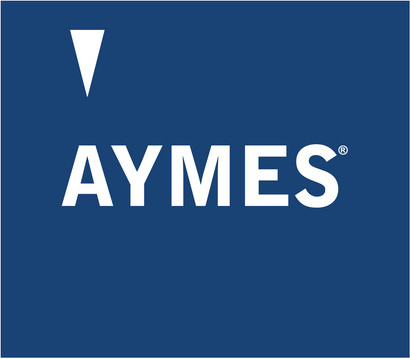Oral nutritional supplements (ONS) are prescribed for paediatric patients living with a disease, disorder or medical condition, and are temporarily, or permanently, unable to meet nutritional requirements through oral diet alone. There are fewer studies looking at the prevalence of disease related malnutrition in children than adults. Prevalence of acute malnutrition in children is estimated at between 6-14% of hospitalised children surveyed in Germany, France and the United Kingdom.¹ Early detection, management, and/or prevention of malnutrition is advantageous to help optimise nutritional status, growth and development.
This article will consider indications for paediatric ONS products, oral nutrition support strategies for children and strategies to increase ONS compliance in this patient group.
Indications for paediatric ONS product
ONS are used for medical purposes and can be prescribed on the NHS for patients who meet the Advisory Committee on Borderline Substances (ACBS) prescribing criteria.² Children requiring ONS will usually have faltering growth.³ The British Association for Enteral and Parenteral Nutrition (BAPEN) defines faltering growth as deviation in the normal growth pattern of children, characterised by a downward shift of two centile spaces on the growth chart.¹
Children may be unable to meet nutritional requirements through oral diet alone due to increased energy requirements; reduced appetite and/or increased losses or malabsorption (see Table 1).⁴
Dietetic assessment
Prior to prescribing ONS, a full nutritional assessment should be undertaken (see Table 2).
ONS in paediatrics
First-Line Interventions
The National Institute for Health and Care Excellence (NICE) guidelines for faltering growth recommend trialing first-line interventions before ONS. Approaches may include: encouraging relaxed and enjoyable feeding and mealtimes, eating together as a family or with other children, establishing regular eating schedules and avoiding coercive feeding.⁴
A food-first approach to nutrition support is encouraged in the paediatric population. Fortifying foods increases nutritional density of the diet without increasing the volume of food consumed.
Additional snacks can be used to improve nutritional intake and encouraging patients to consume nourishing drinks (e.g., smoothies or milkshakes) which provide more energy and protein than water is also an effective strategy.
Challenges in paediatrics
Picky Eating
There is no universal definition for Picky Eating (PE), but it is widely accepted as a restriction or rejection of familiar foods with or without neophobia.
Ninety-two children aged 36-to-60 months with PE behaviours and evidence of growth faltering demonstrated that ONS, alongside nutrition counselling, over four weeks promoted catch-up growth and reduced incidence of respiratory tract infections.⁷ If a food-first approach does not work in children with PE, ONS provides an effective way to meet nutritional requirements, while reassuring the caregiver and supporting weight gain (where indicated) in children without other medical conditions.⁸
Avoidant Restrictive Food Intake Disorder
Avoidant Restrictive Food Intake Disorder (ARFID) is characterised by avoiding eating food or restricting food intake; it does not include having a distorted body image or being preoccupied with body image).⁹ Children with ARFID may exhibit sensory sensitivity (e.g., avoid specific foods), lack of interest in eating food and/or fear of adverse consequences (e.g., a choking phobia).¹⁰ It can have a substantial effect on nutrition and health status and requires a multidisciplinary team (MDT) approach. Table 3 summarises suggested management strategies for children with PE and ARFID.
An MDT approach is recommended when providing children with oral nutrition support,⁴ which may include a health visitor, social worker, clinical psychologist, paediatric dietitian and/or occupational therapist.
Second-Line Interventions
Oral Nutritional Supplements (ONS)
If a child is unable to meet nutritional requirements through oral diet alone, the NICE guidelines recommend a trial period of ONS.4 The European Society of Paediatric Gastroenterology, Hepatology and Nutrition (ESPGHAN) Committee on Nutrition also recommend ONS should be provided in addition to an oral diet to increase and meet total energy and micronutrient requirements.¹³ ONS should always be given under medical supervision and used in accordance with care pathways, clinical guidance and ACBS prescribing indications.
ONS Formats
A wide variety of paediatric ONS product formats are available, including ready-to-drink (RTD), dessert-style, juice-style and low volume. More recently, powdered paediatric ONS products have become available. Paediatric ONS generally provide 1.0 kcal/ml to 2.4 kcal/ml in a variety of flavours. ONS products are usually based on cow’s milk protein and age-adapted for energy, protein and micronutrients.
Dosage Considerations
There is a lack of guidance on ONS dosage recommendations in a paediatric population. When considering the ONS dosage, it is important to compare existing oral intake to age and gender-specific nutritional requirements to determine deficit in energy, protein and micronutrients.
In the UK, it is common clinical practice to prescribe sufficient ONS to meet at least 50% of the age-matched reference nutrient intake for micronutrients, while ensuring a balanced mix of essential macronutrients needed for growth. Most children will start with one-to-two ONS per day, depending on their oral intake of solids.
Using Adult ONS Products in Paediatrics
Adult ONS can be used if there are no suitable paediatric products, and the child meets the manufacturer’s recommended age requirements. Some adult ONS can be cheaper than paediatric ONS with a wider variety of flavours and formats (e.g., plant-based) available, which may influence prescribing decisions. Most adult ONS are suitable for children aged over 6-8 years if clinically indicated. However, healthcare professionals (HCPs) should always check information with the manufacturer and use their own clinical judgement.
Monitoring progress
Children receiving ONS should be regularly reviewed by a paediatric dietitian to monitor growth and determine whether ONS remains indicated.⁴
During follow-up appointments, it is important to consider:
- rapid weight change,
- linear growth (using UK-WHO growth chart),
- changes in dietary intake,
- tolerance,
- compliance,
- knowledge, views, and opinions of child and/or caregivers,
- estimated nutritional requirements,
- changes in clinical status
Compliance
ONS compliance can be defined as the percentage of prescribed amount of ONS consumed per day;¹⁴ compliance optimises growth and reduces waste.¹⁵ Further research is required on ONS compliance in children; the limited evidence available focuses on specific patient groups.¹⁶
Offering powdered-style ONS products made with fresh milk may improve ONS compliance in children. A double-blinded pilot study of 59 participants (including 21 paediatric patients undergoing treatment for cancer) found fresh milk-based supplements were the preferred type of ONS.¹⁶
In adult populations, taste fatigue and monotony, which tend to occur when ONS are consumed regularly over prolonged periods, are thought to contribute to poor compliance.¹⁷
Therefore, it may be helpful to offer children a variety of flavours and formats (Figure 1). Research has demonstrated that tangible rewards, such as stickers, can increase acceptance of previously disliked foods.¹⁸
Conclusion
When used correctly, ONS are useful in children with faltering growth and disease-related malnutrition who are unable to meet nutritional requirements from diet alone. Careful consideration regarding the dosage and format is important to ensure correct product prescription. HCPs should regularly monitor nutritional status, growth and oral nutritional intake to determine whether the prescribed ONS remains indicated. A food-first approach (alongside behaviour strategies) should be encouraged, but if oral intake remains insufficient, ONS can be effective in meeting nutritional requirements.
- ◄References:
-
- Brotherton A, Simmonds N, Stroud M (2010). British Association for Parenteral and Enteral Nutrition. Malnutrition matters: meeting quality standards in nutritional care. Accessed online: www.bapen.org.uk/pdfs/bapen_pubs/bapen-toolkit-for-commissioners -and-providers.pdf (August 2021).
- National Institute for Health and Care Excellence. BNF For Children. Accessed online: https://bnfc.nice.org.uk (November 2020).
- Hill SM (2017). Oral nutritional supplementation: a user’s guide. Paediatr Child Health; 27(8): 378–82.
- Gonzalez-Viana E, et al. (2017). Guideline Committee. Faltering growth in children: summary of NICE guidance. BMJ; 358: j4219.
- Mansour F, et al. (2014). Effect of sodium deficiency on growth of surgical infants: a retrospective observational study. Pediatr Surg Int.; 30(12): 1279-1284.
- Mann M, et al. (2020). Urinary Sodium to Creatinine Ratio in Healthy Infants. Clin Pediatr.; 51(9): 852–5.
- Alarcon PA, et al. (2003). Effect of oral supplementation on catch-up growth in picky eaters. Clin Pediatr.; 42(3): 209-217.
- Ghosh AK, et al. (2018). Continuation of oral nutritional supplementation supports continued growth in nutritionally at-risk children with picky eating behaviour: A post-intervention, observational follow-up study. J Int Med Res.; 46(7): 2615-2632.
- Attia E, Walsh BT (2020). Avoidant/Restrictive Food Intake Disorder (ARFID) - Psychiatric Disorders. In: MSD Manual Professional Edition. Accessed online: www.msdmanuals.com/en-gb/professional/psychiatric-disorders/ eating-disorders/avoidant-restrictive-food-intake-disorder-arfid (November 2020).
- Fisher MM, et al. (2014). Characteristics of Avoidant/Restrictive Food Intake Disorder in Children and Adolescents: A “New Disorder” in DSM-5. J Adolesc Health; 55(1):49–52. Accessed online: https://linkinghub.elsevier.com/retrieve/pii/S1054139X13007714 (Nov 2020).
- teinsbekk S, et al. (2017). Child and parent predictors of picky eating from preschool to school age. Int J Behav Nutr Phys Act.; 14(1):87.
- aylor CM, Emmett PM (2019). Picky eating in children: causes and consequences. Proc Nutr Soc.; 78(2):161-169.
- Braegger C, et al. (2010). Practical approach to paediatric enteral nutrition: a comment by the ESPGHAN committee on nutrition. J Pediatr Gastroenterol Nutr.; 51(1):110-122.
- Seguy D, et al. (2020). Compliance to oral nutritional supplementation decreases the risk of hospitalisation in malnourished older adults without extra health care cost: Prospective observational cohort study. Clin Nutr.; 39(6):1900-1907.
- Hubbard GP, et al. (2012). A systematic review of compliance to oral nutritional supplements. Clin Nutr.; 31(3):293-312.
- Cohen J, et al. (2011). Paediatric oncology patient preference for oral nutritional supplements in a clinical setting. Support Care Cancer; 19(9): 1289–96.
- Galaniha LT, McClements DJ, Nolden A (2020). Opportunities to improve oral nutritional supplements for managing malnutrition in cancer patients: A food design approach. Trends Food Sci Technol; 102: 254–60.
- Remington A, et al. (2012). Increasing food acceptance in the home setting: a randomized controlled trial of parent-administered taste exposure with incentives. Am J Clin Nutr.; 95(1): 72-77.


